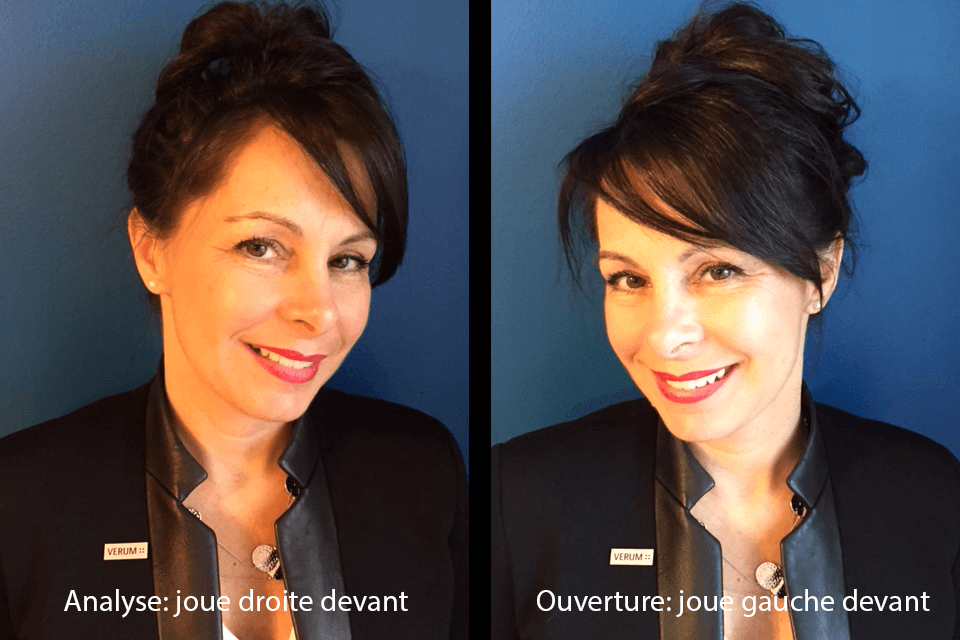What Does Your Online Profile Photo Say About You?
Recently a businessman asked my to give him my Synerologist opinion on his LinkedIn profile photo. While I am sure he was only expecting a few words in return, what I ended up replying became a document almost a page and half in length!
As surprising as it may seem, there is a multitude of observations that can be drawn from a simple portrait. I thought I would share the introduction to the email I sent him with you because his concern is very relevant and I feel that this may interest you as well. Nowadays, our competencies and our professional image first pass through an almost inevitable filter, the web:
Who hasn’t already “Googled” an expert before a consultation?
Our profile photo must represent who really are or at least the facets we hope to demonstrate professionally. As a result, I can confirm that I regularly see profile photos leave a negative impression and doubtful confidence; a waste of a tool precious to the creation of important business relationships.
Here is the beginning of my answer sent to this concerned businessman:
“It’s my pleasure to sit here at my computer to answer your question and hopefully, satisfy your curiosity.
Above all, I have to say that the analysis of a photo versus that of a person’s physical presence can’t be compared in the same scope.
Let me explain: when it comes to a portrait, we mimic the emotion that we hope to capture in a photo, so the emotion isn’t real, it’s played, therefore controlled. While an action shot of you may seem more authentic, we must be careful as we only see a fraction of a second of continuous movement. This image, without context, could have a terrible impact or even destroy a reputation, especially in the world of public figures. Choosing a freeze frame a second or two later could could result in a very different image. In fact, video analysis remains the best way to decipher a person’s nonverbal language. This is why we have to be careful when we watch an opinionated, context free photo analysis in the media.
However, in social media, it is important, even paramount, to choose a photo that leaves what we hope will be a lasting and positive impression. We are influenced by how we read emotion, whether it’s disguised, negative or positive and by how interpret a state of mind, whether it be competitive, superior or inferior. This type of reading occurs subconsciously without us being able to validate precisely which facial or physical elements lead us to our conclusions. Knowing where to look and locate consciously validated clues is an undeniable advantage in communication.
Obviously,I am not going to publish the analysis of his photo. I found it interesting, however, to share these observations with you. I propose some observation keys that you can easy use to analyze your profile photos on social media.
The Asymmetry of your face
Reading the asymmetry (or dissymmetry) of your face is relatively easy and can reveal whether your expression is authentic or played. To better read the expression shown, cover half you face on a photo (left or right) and read the emotion that’s revealed. When you cover the other side of your face, do you see the same emotion on both sides? If not, there’s a dissymmetry, which indicates inconsistency. Everyone knows that we can’t be both happy and sad at the same time. Knowing this, if you find two different emotional states on opposite sides of your face, there’s a strong possibility that the reader will have mixed emotions (subconsciously or not) when they look at your photo.
How are we able to display 2 emotions at the same time? To better understand, it’s interesting to know that each side of our face is controlled by the opposite hemisphere of our brain. The right side of our brain treats our emotional responses while the left side is about self-control. It therefore easy to understand that if we are mimicking an emotion it will be visible on the right side of our faces where real emotion can be read from the left side. Ideally, facial asymmetry showing positive emotion on both sides is favorable and it helps avoid emotional confusion.
The positioning of our head
Our head can be systematically positioned on three axes. Each position tells something about our state of mind at the moment the photo was taken. The rotating axis allows us to turn a cheek to the camera. With our right cheek presented, we are showing a more analytical side while the left reveals more of an openness to engage with others. Depending on your profession, you should consider which cheek you’re turning.
Next we have the sagittal axis. Does your head point up or do you tend to gaze towards the ground? To make this a little easy, pay close attention to the position of your chin in photos. If it’s pointed up, this is commonly considered to be a pose of superiority. Depending on the situation, you may want to pay attention to where your chin is pointed in photos, especially when looking for a job. Finally, we have the lateral axis. Does your head tend to lean towards one of your shoulders? In situations of mistrust we tend to lean towards the right shoulder with the grade of trust increasing as we tilt towards the left. To simplify your self-analysis, dwell for a minute on your head’s most pronounced position in photos. In synerology there are 27 different head axis including neutral.
Your mouth
Beyond the veracity of your smile, do you photograph with your mouth slightly open, closed or pursed. Pursed lips gives the reader a sense of internalization, of being close off and even anger. It is good to know that when a person wishes to communicate (open themselves to others) they tend to loosen their lips to the point where the mouth remains open slightly in between statements, a sign of willingness to communicate. Knowing this can have you at a great advantage when communicating with others, especially when negotiating.
Your shoulders
Are they relaxed or are the up towards your head, slightly tight? You will notice that in a state of tension, stress, anger or when we are ready for action we tend to lift our shoulders. When relaxed, we let them drop slightly. Again, knowing this is important to how we wish to present ourselves in our photos.
Conclusion
In business, many people award a considerable budget to the branding of their company in order to stand out from the competition. Your online profile photo should be considered just as important because you, after all, may be the head of your company and you are responsible for its success.






